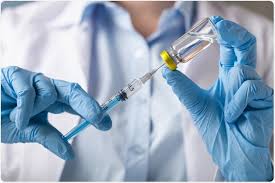
Low Vaccination Rates Among Nursing Home Residents for COVID-19, Flu, and RSV in Early 2024-2025 Season
Vaccination rates for COVID-19, influenza, and respiratory syncytial virus (RSV) remain alarmingly low among nursing home residents as the 2024-2025 season progresses, according to recent research published in the Morbidity and Mortality Weekly Report by the U.S. Centers for Disease Control and Prevention (CDC).
The study, led by Hannah E. Reses, M.P.H., from the CDC in Atlanta, analyzed vaccination data reported to the CDC’s National Healthcare Safety Network. It found that as of November 10, 2024, only 29.7% of nursing home residents had received a COVID-19 vaccine for the 2024-2025 season. Among facilities that reported vaccination coverage for influenza and RSV, 58.4% of residents had received the flu vaccine, and just 17.9% had been vaccinated against RSV.
The research highlighted significant variations in vaccination coverage depending on the region, facility size, and social vulnerability index level. For example, facilities located in regions with higher social vulnerability had lower vaccination rates. The study underscores the critical gap in immunization that leaves nursing home residents at risk during this season's respiratory virus outbreaks.
The CDC authors emphasize the urgent need to address these low vaccination rates, stating, "Most nursing home residents have not been afforded the protection offered by vaccination against severe COVID-19, influenza, and RSV disease during the 2024-2025 respiratory virus season." The report stresses that increasing vaccination coverage must be a priority to safeguard vulnerable populations.
The findings raise concerns about the potential for widespread illness and severe outcomes in nursing homes as the season progresses. While some efforts have been made to improve vaccination uptake, the data suggests more targeted action is necessary to protect residents from these preventable diseases.
Notably, one of the authors disclosed ties to the pharmaceutical industry, which could be seen as a potential conflict of interest in the interpretation of the findings.